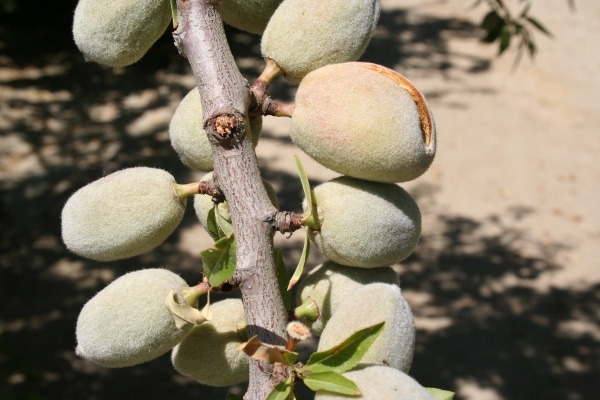
California Crop Weather: almond development advances
Cool, wet weather conditions continue to slow California crop development;Weather slowed grape growth causing mildew and fungus to spread despite fungicide applications;Rice planting mostly complete with emergence in most fields;Some significant almond development as nuts solidify inside the hull and form out.
June 15, 2011

The latest California Crop Weather report from the California Field Office of the National Agricultural Statistics Service released May 13.
Weather
The remnants of a significant low pressure system moved southeast across southern California on Monday and Tuesday of last week (week of June 6). This system dropped up to one quarter inch of rain in the Central Valley and up to one and half inches in the Sierra Nevada. Snow fell down to 7,000 feet adding to the still above-normal snowpack at the higher elevations.
Temperatures early in the week remained below normal for the entire state. A smattering of precipitation ended in the southern Sierra and Tehachapi Mountains Tuesday. The highest amounts of precipitation in the southern mountains measured at three quarters of an inch of rain.
Daytime heating generated afternoon thunderstorms over the mountains of northern California Tuesday through Friday. Maximum daily temperatures rose to near normal by Friday.
A weak front moved across the northern part of California over the weekend dropping temperatures to 10-plus degrees below normal. This system failed to generate significant precipitation.
Field crops
Warmer temperatures were a welcome change for field crops, although many are still behind schedule compared to recent years.
Alfalfa harvest ranged from the first cutting to the fourth cutting in the state.
Sunflower seed, corn, and bean planting continued. Wheat harvest was moving north as plants reached maturity. Oat hay baling resumed.
Rice planting was mostly complete with a majority of the planted fields emerged.
Pests were monitored in cotton fields with some fields treated for lygus. Weed treatments were ongoing in planted fields. Irrigation was underway in most areas with other areas starting soon.
Fruit crops
The Valencia orange and grapefruit harvest continued.
The blueberry harvest was in full swing with crop sales to domestic and international markets. Strawberry harvest continued across the state while nursery replanting was almost complete.
Unseasonably cool weather and rains slowed grape growth causing mildew and fungus to spread despite fungicide applications. Sulfur applications continued. Growers were aware of the second generation European grapevine moth even though trapping was lower compared to last year.
Peach thinning operations continued after the wet weather. Cherry harvest continued despite rain damage on late-maturing varieties in affected areas.
Nut crops
There were reports of significant development in almond orchards as the nut had solidified inside the hull and formed out.
Pistachio and almonds looked promising. Pesticides and fungicides were applied even though mite and insect pressure continue to progress slowly in most orchards.
Codling moth, weed control, and fungus treatments were applied in walnut orchards.
Sprays were applied in pistachio orchards.
Vegetable crops
In Kern County, the carrot harvest continued.
Fresno County reported onions and garlic maturing for harvest while processing tomatoes started to grow, but the cool weather has been a hindrance.
In Merced County, tomatoes were doing very well. San Joaquin County reported melons planted and onions were packed in the field.
Sutter County reported field work and preparation as vegetables were harvested for farmers markets. Siskiyou County reported onions had emerged and growing well where the wind did not create damage.
You May Also Like



